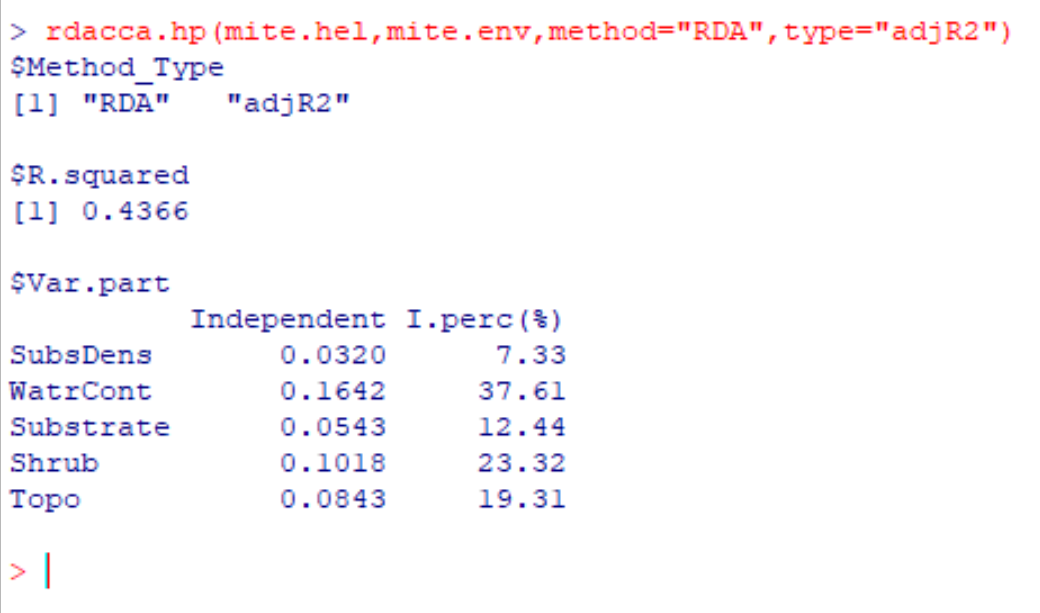RdaCca Crack Free Download [Win/Mac] [2022]

RdaCca Crack+ Free Download
This program uses 522 packages for statistical analysis and visualization. The main files of RdaCca are as follows: Binary (the numerical data format for storing data and RdaCca files): THe current version of RdaCca relies on the binary data type of the ARB (Archive of Research in Astronomy and Astrophysics), the standard format of the NASA library. Unfortunately the binary format introduced some difficulties in interfacing with other software tools (including the ARB, see below) that do not support the binary data type. Thus the format has been converted to an ASCII file, and most operations have been converted to this format. The binary format is described in detail in the ARB manual. The central structure of RdaCca is an ASCII file that contains all the analysis results. An ASCII file of 481 lines is required for this program. To begin with, this file must contain the values of nlog (the parameter that defines the number of eigenvalues to retain), nobs (the number of observations), xax, yax and dim (the dimensions of the data set). The header must contain the following line, lognoobs nlog dim 4 5 For simplicity, all these parameters are defined by the user in this form. Later on it is trivial to replace them by their values. The names of the parameters are: lognoobs: the number of eigenvalues to retain nlog: the number of observations nobs: the number of observations dim: the dimension of the data set xax and yax: column and row names of the data matrix The data matrix is then specified as a vector of values for each observation and cell of the data set. For example, the code 100 2 21 3 5 9 10 13 represents the matrix 100 -1 -2 -3 -4 2 21 3 5 9 10 13 The first line on the ASCII file has the form: lognoobs nlog dim 4 5 The following lines contains the formulae that specify the analysis (redundancy analysis or correspondence analysis): if(lognoobs>0.6) then… RdaCca uses a 522-element table for the analysis. As this program does not carry out forward selection of explanatory variables, it is necessary that all the calculations can be performed with a file containing all the explanatory variables
RdaCca Full Product Key
RdaCca Cracked Version can perform redundancy analysis (RDA) and canonical correspondence analysis (CCA) as outlined in Legendre & Legendre. Instead of running a particular computer program (such as CANOCO), this is a more direct way of demonstrating the method. RdaCca is programmed to allow an arbitrary set of explanatory variables to be included in the analyses. The advantages of this are discussed in the course text, p. 353 of Legendre & Legendre. In particular, multiple regression followed by direct eigenanalysis can take data from many, possibly incomplete or wrong, datasets. Once all the data are collected, a “final” ordination can be obtained. Some data files are attached to this script. These are test data with more than one dataset, to illustrate how the program works. Instructions: The program assumes the data are stored in the file Rda.rda. Once you know how to use this program, it is straightforward to do the necessary analyses using other data files. The functions are described in the course text on p. 348. In addition, there is a menu to calculate eigenvalues. The data files come with a startup file called eigenvalues. This file, a format for SVD, explains the particular eigenvalues calculation. But other methods (like Householder) can also be used. Having run the startup file, the computer prompts for a data file (in the current directory) to be analyzed. The prompts are autodetected. If you want to analyze other data, simply place it in the data directory and call the program by typing rdaCca . For example, if you stored the file station1.rda in the directory called data, you would type RdaCca station1 station10 5000. The resulting output files would be station1st10.rda and station1sol.rda. Station1st10.rda contains the eigenvalues in a table. Station1sol.rda contains the eigenvectors and the first ordination axes (from PCA). RdaCca has more features. For example, you can choose to include variable names as explanatory variables, perform forward selection of variables, and ordinate by individual or by dataset. If the dataset variable is used, the ordination axes are transformed to reflect the changes in the datasets. Performing RDA by dataset gives an idea of the 02dac1b922
RdaCca Activation Code
Numerical Recipes is a set of subroutines and functions for mathematical computations. The major types of algorithms implemented in the collection are those of matrix assembly, vector solution of linear equations, matrix decomposition (such as LU, QR, and SVD), root finding, and numerical integration. Some basic statistical algorithms are also provided. The implementation is optimized for the HP 9000 series of computers, DEC UNIX, and Linux. If there are familiar issues with this software for you, I’d be happy to know about them (and I’m sure others are as well). You can always download it from here and extract the “rda” folder, which contains the documentation and the subroutines used for this program. The project web page is available here. The present invention relates to a liquid crystal display device, and more particularly, to a circuit for driving a liquid crystal display device using a direct-current bias voltage. A liquid crystal display device is widely used as a display section of a portable television or a mobile telephone. In such a display device, a direct-current bias voltage is applied to a liquid crystal panel, and when the display device is turned on, the direct-current bias voltage is applied to a pixel of the liquid crystal panel in a predetermined direction. The direction of the direct-current bias voltage at that time is called as a bias direction. An example is disclosed in Japanese laid-open patent publication No. 2005-316546, which shows a voltage waveform of a direct-current bias voltage with its bias direction set to a positive polarity. FIG. 1 shows an example of a liquid crystal panel driven by a direct-current bias voltage. A first polarizer 11, a glass substrate 13, a voltage application line 14, a liquid crystal cell 15, a first electrode 16, a second electrode 17, a liquid crystal layer 18 and a second polarizer 19 are formed in order on a front surface of a liquid crystal panel. The first polarizer 11, the glass substrate 13, the voltage application line 14, the liquid crystal cell 15, the first electrode 16, the second electrode 17 and the second polarizer 19 form a liquid crystal panel 100. The first polarizer 11 has a structure on which a first transparent electrode 10 is formed. The first transparent electrode 10 is connected to the first electrode 16 in the liquid crystal cell 15 via the voltage application line 14. The second
What’s New In RdaCca?
RdaCca is a program for redundancy analysis. It is also a generic code allowing the user to perform a range of canonical correspondence analyses. As is the case with most applications of RDA, the user specifies the number of axes to use in the analysis, as well as the input data format. The number of axes is then chosen for the best separation of the data set. Typically, the first four ordination axes are chosen. Data are in two input files; in one the first variable is fixed, while in the other data in ascending order are placed on the x-axis. The first variable is named “X”, then the next one “Y”, and so on. RdaCca then calculates the number of axes needed for the analysis, based on the calculated eigenvalues. RdaCca then performs the analysis, and calculates the first two eigenvectors. Authors: Legendre & Legendre [1996] were first to propose the use of Canonical Correspondence Analysis (CCA) to study community ecology. CCA has proved to be a useful ordination technique to identify determinants of species’ distribution, especially in situations where it is suspected that the number of explanatory variables is greater than the number of species. Our RdaCca calculates the relationship between species presence and environmental variables using the proposed redundancy analysis. The data sets are in two different input files; the first includes the presence/absence data and the environmental data, while the second contains only the environmental data. The data can be set up in one of several ways, including in the ordering of species based on their presence/absence, on the cumulative species’ occurrence values, or the single species distribution maps. RdaCca uses redundancy analysis (RDA) as a base for canonical correspondence analysis (CCA). RDA is a method to obtain the first two canonical variables in a data matrix with a limited number of explanatory variables. It allows the user to combine the advantages of multivariate analysis and of additive partition of a variance. RDA has been recently applied to community ecology, and is an accepted method to allow species to be described in relation to environmental and spatial variables. See Fillenbaum & Groves, 1989, for a textbook on RDA. See also Legendre & Legendre, 1996, for some of the basic theory behind RDA. A major advantage of CCA is that it allows the effect of all significant environmental variables to be studied. We emphasize that RdaCca cannot be
https://www.taoalchemia.com/profile/WinQuickIP-Crack/profile
https://www.lidermarketing.ca/profile/OvCalendar-Crack-With-License-Code-X64/profile
https://www.karsevayoga.com/profile/Clipboard-Manager-Crack-2022/profile
https://www.municipiodecananea.com/profile/DiProtector-Crack-For-PC/profile
https://www.wildboyadventures.com/profile/On-Air-Crack/profile
System Requirements:
Minimum: OS: Windows 7 64-bit Processor: Dual core 2.0 GHz (or equivalent) Memory: 2 GB RAM Graphics: DirectX9 graphics card with at least 1 GB video memory Storage: 50 GB of available space DirectX: Version 9.0 Network: Broadband Internet connection Sound Card: DirectX compatible sound card with at least 16-bit stereo support Additional Notes: The game is an EA title, and can only be played on Windows XP or above. It is
http://escortguate.com/windows-registry-guide-crack-mac-win-updated-2022/
https://alafdaljo.com/amusicsoft-apple-music-converter-crack-free-download/
http://lawcate.com/safe-n-sec-corporate-crack-torrent-activation-code-free-2022/
http://www.techclipse.com/?p=31493
http://it-labx.ru/?p=68880
https://kramart.com/cpu-monitor-win-mac-updated-2022/
http://imeanclub.com/?p=80481
https://liquidonetransfer.com.mx/?p=44962
http://purosautoshouston.com/?p=34315
http://www.ecomsrl.it/excel-ftp-software-download-for-windows/
http://buzhompro.com/?p=3491
https://fystop.fi/getanonymous-pro-crack/
https://nameme.ie/green-point-launcher-crack-free-mac-win-2022-latest/
http://yotop.ru/2022/07/12/bat2exe-for-windows/
https://rwix.ru/bitsoft-showip-2-0-59-keygen-download-macwin-final-2022.html
